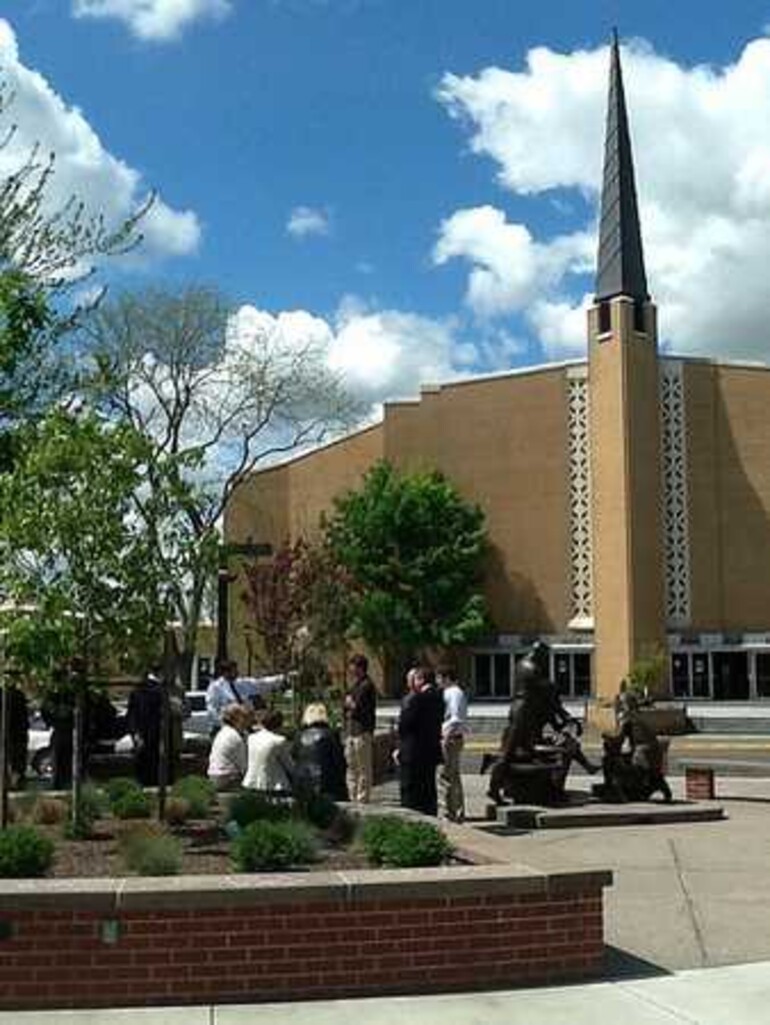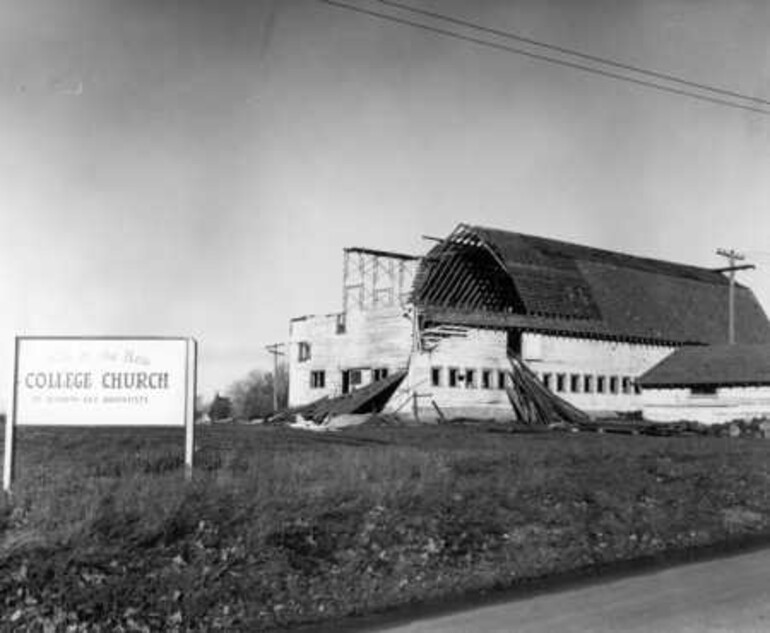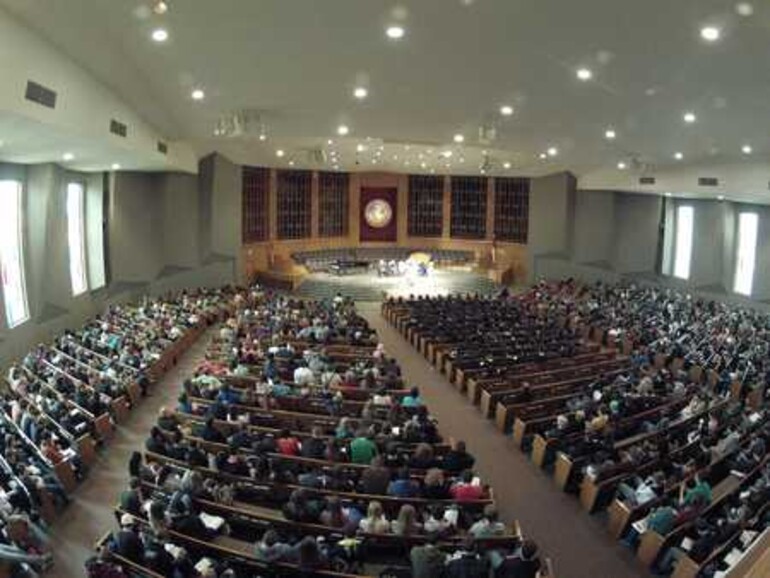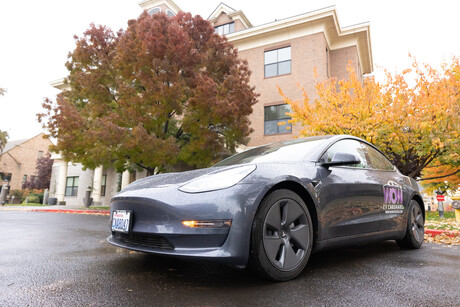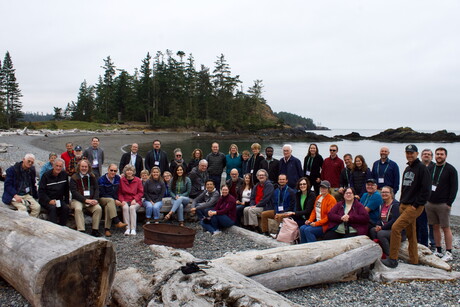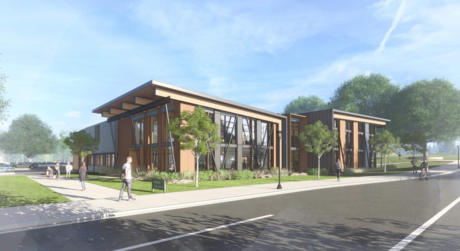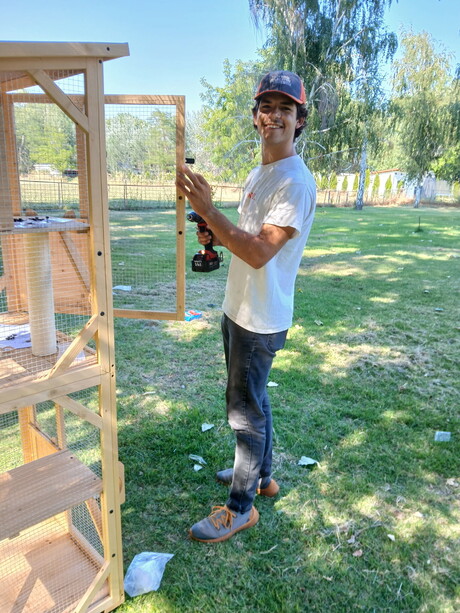On Oct. 20, 1962, to the sounds of trumpets and with the choir leading the way, Walla Walla campus church members marched from Columbia Auditorium (now the location of Havstad Alumni Center) to the new College Church, built on the site of the old college barn. After 23 years without an adequate church sanctuary, the college campus finally had a house of worship.
In the university's early years, Village Hall served as the church for community members and for the college. It burned down from an act of arson in 1912 and was rebuilt in 1920 to accommodate 700 people. However, by 1939, the building no longer had the capacity to serve the college's needs, and services were moved to Columbia Auditorium, which also served as the campus gymnasium and a major event venue.
Paul Heubach, College Church pastor from 1952 to 1963, and other planners desired a substantial church that inspired reverence — something that the crowded, noisy services in Columbia Auditorium could not achieve. Twenty Sabbath School classes were held in the auditorium each week. The new church was also designed to highlight the role of music in worship, as evidenced by the Casavant pipe organ in the front of the sanctuary.
Now at its half-century mark, the University Church has a six-member pastoral staff serving 2,400 members, which include both church and community members. "Walla Walla University is a Seventh-day Adventist learning community," says Alex Bryan, senior pastor. "We work and play, study and worship on this Christian campus. And so, both symbolically and in reality, the church building is the center of campus. This sacred space defines who we are."
To celebrate its 50th anniversary, the Walla Walla University Church will commemorate this event at the second church service on Oct. 20, with reflections from church members who made the original march and with music from the 1962 service. A special Sabbath School in the Melvin K. West Fine Arts Center Auditorium at 10:30 a.m. will highlight the history of the church. From there, members can join a procession to the church, where they will be greeted with trumpets just as the original marchers were. In his 11:45 a.m. service sermon, Bryan will discuss why history and traditions matter.





